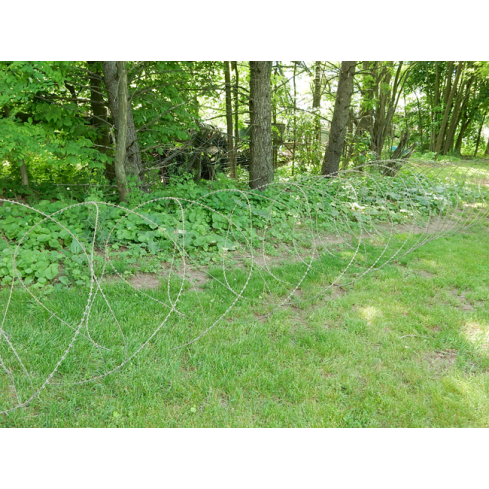The History of USGI Concertina Wire



Concertina wire, often referred to as USGI razor wire, originated as an improvised design by soldiers during the first World War, driven by the instinct of survival. The concept of barbed wire, introduced to Argentina in 1845 by Englishman Richard Newton, evolved, with Frenchman Louis Francois Janin securing a patent in 1865 for a double-wire design with diamond-shaped barbs. Barbed wire gained popularity among farmers as an affordable means to restrain cattle, with the first US patent awarded to Lucien B. Smith of Kent, Ohio, in 1867. By World War I, barbed wire had become a common military barrier. The traditional barbed wire obstacles, when damaged, formed loose clusters, making them more challenging to navigate. The innovation of circular barbed wire "concertinas" became prevalent during trench warfare, proving effective for military defenses in "no-man's land."
The Dannert wire, developed by Germans, employed high-grade steel wire that was oil-tempered, offering increased durability and ease of deployment by a single individual. During World War II, an inferior version called "Yellow Dannert" was produced due to high demand. Another advancement, the triple concertina wire, utilized two parallel twists topped with a third concertina, providing a random entanglement factor while being quicker to deploy. Although originally handmade by soldiers, today concertina wire is factory-made and widely used by militaries, law enforcement, prisons, farms, and other applications.
Remarkably, authentic US military surplus concertina wire is available at our military surplus store at unbeatable prices. Full skids (40 rolls) are offered for $995, half skids for $595, and individual rolls for just $25. Don't miss out on this incredible deal for concertina wire, suitable for various applications.




